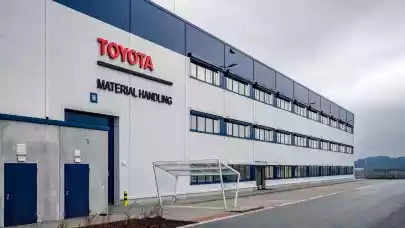
Older buildings usually consume more energy in operation than new construction. That is not only a cost issue. It also affects how an asset performs against market standards like BREEAM, EU Taxonomy, and CRREM, as well as regulations such as the Energy Performance of Buildings Directive and the rules for Building Automation and Control Systems (BACS). Many owners assume the only way to close the gap is a major refurbishment. Better insulation and new equipment certainly help, but they are expensive and disruptive. Investments in deep fabric and equipment upgrades can reach one to five percent of the asset value.
There is another lever that is often overlooked, and it delivers results far faster. The way a building is controlled matters just as much as the equipment inside it. In particular, the control of heating, ventilation and air conditioning (HVAC) through the Building Management System (BMS) and the automation layer can make or break comfort and energy performance. The good news is that many buildings already have the hardware needed to run far more efficiently and consistently. What they lack is the intelligence to orchestrate it.
Below, we explain where performance is lost and how it can be restored.
Where performance is lost
1. Commissioning versus reality
At practical completion, the HVAC system is commissioned for a theoretical usage pattern. Real life is messier. Occupancy varies by season and day of the week, meeting rooms fill and empty, and weather conditions significantly impact the building. Traditional controls don't consider weather or energy price forecasts and often assume a constant usage pattern, which can limit their effectiveness.
2. Change over time
Tenants arrive and leave. Working hours shift. Desk density changes. Printers and servers add heat. Fit-outs move partitions, which change air flows and heat gains. In theory, the BMS should be updated to reflect the new layout and use. In practice, this never happens, so settings from year one try to run a year ten building.
3. Performance drift
Comfort calls are the biggest hidden driver of waste. A hot or cold complaint is directed to the facility manager, who takes action. Over months and years, people nudge set points, open or close valves, override schedules, bump up fan speeds, or even make physical adjustments in plant rooms. Each change is understandable in isolation. Together, they push the system far away from an efficient operating point.
4. The complexity barrier
Recommissioning helps, but it is expensive, and it does not prevent the building from freezing in time. Even experts face too many variables at once. Think of all the levers available across boilers, chillers, air handling units, pumps, dampers, valves, supply temperatures, differential pressures, and ventilation rates. Add weather, energy tariffs, occupancy, and comfort, and the problem quickly exceeds what a human can comprehend and tune by hand every day.
What AI control does differently
Artificial intelligence is very good at ingesting data, spotting patterns, and making continuous decisions based on the current reality. An AI control layer sits on top of the existing BMS and sends set points and recommends schedules to HVAC equipment. It does not replace the BMS. It makes the BMS controller smarter.
In practice, AI control can continuously suggest and dictate the correct settings. Some examples:
- Precondition a building ahead of a cold front, using the thermal mass of the structure so that comfort is met with less peak energy, which increases equipment longevity.
- Lower supply temperatures when outside conditions allow, which reduces losses and improves equipment efficiency.
- Balance duct pressure and supply temperature to meet comfort at the lowest combined energy cost and equipment stress.
- Adjust fresh air intake based on occupancy, while keeping air quality as the highest priority through sensor feedback.
- Avoid expensive tariff peaks by shifting load when possible, using the thermal mass of concrete to stabilise comfort and equipment capacity.
- Detect the bottlenecks in the system that hinder further efficiency gains.
A simple example
An office with variable occupancy operates weekday mornings at high fresh air rates according to a fixed schedule. AI control monitors low CO₂ levels and low occupancy from sensors and access data, and adjusts ventilation to the comfortable minimum. It also sees a price spike at 09:00, so it preconditions those areas at 07:30 when prices are lower, and due to the thermal mass, it can coast through the expensive time. Comfort is maintained, and the chiller avoids peak operation, which also extends the life span of components. The monthly bill drops without any loss of service.
Results owners can expect
From experience and hundreds of cases, adding an AI control layer to an existing BMS commonly reduces total building energy consumption by 15 to 30 per cent, with payback measured in weeks or months rather than years. More importantly, comfort becomes more consistent because the system monitors many more signals than a human team can track in real-time. Fewer comfort calls lead to happier tenants, stronger retention, and a smoother path to meeting disclosure and taxonomy requirements.
In some markets, this approach is now standard practice. In the Nordics, for example, Myrspoven already manages several large portfolios with AI-driven control. When the Myrspoven team entered Central and Eastern Europe, they found many assets running HVAC equipment at full output for extended periods, and not uncommonly heating and cooling the same zone simultaneously. No owner needs an engineering degree to see what that does to an energy bill.
How does this support standards and regulations
-
BREEAM rewards measured reductions in operational energy and improved management practices. AI control gives both.
- EU Taxonomy requires substantial contribution and do no significant harm criteria that depend on real energy performance and data. AI control improves performance and provides transparent data.
- CRREM pathways set intensity targets over time. Cutting energy now moves assets away from risk of misalignment.
- EPBD recalculation of the energy performance certificate (EPC) after lower energy use intensities have stabilised.
- BACS requirements push for automation that monitors and controls energy efficiently. AI control is a practical route to compliance and often brings the system up to level A.
Voices from the market
“There is rarely a single action that solves sustainability in real estate. This one comes very close and should precede any capital projects. I know everyone in the real estate industry is bombarded with solution providers, but this solution, which in most cases doesn’t require any CAPEX, cuts energy by double digits while improving comfort, is a true no-brainer,” says Steffen Walvius, Founder of Walvius Partners, a real estate sustainability consultant in Central and Eastern Europe
“Many tools claim to optimise parts of a building. Myrspoven controls the entire HVAC operation through a single model, which enables the system to make better trade-offs and pursue targets with a holistic view. The combination of scale, flexibility, and accountability of Myrspoven for both comfort and energy makes it a powerful addition to any owner’s or PM’s toolkit,” adds Oscar Jonsson, Sustainability Manager, Property Asset Management at NOVIER.

Tobias Bjork
Chief Strategy Officer
Myrspoven




